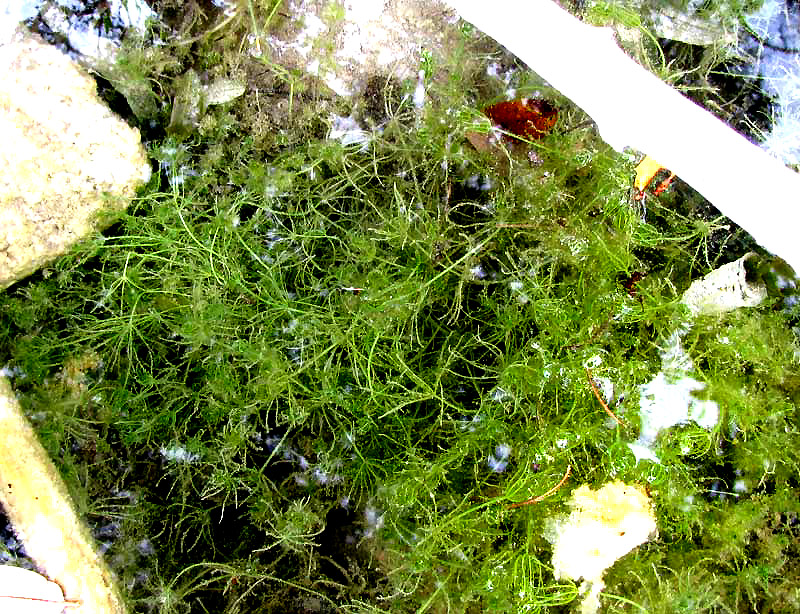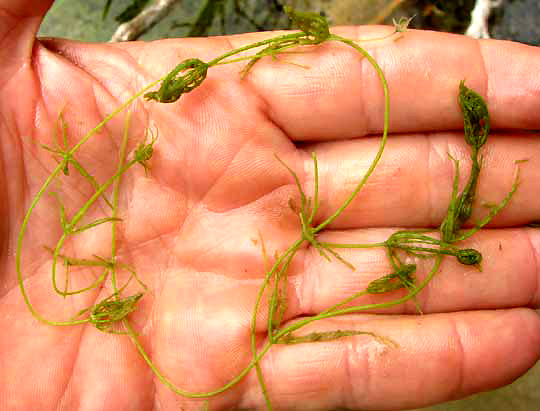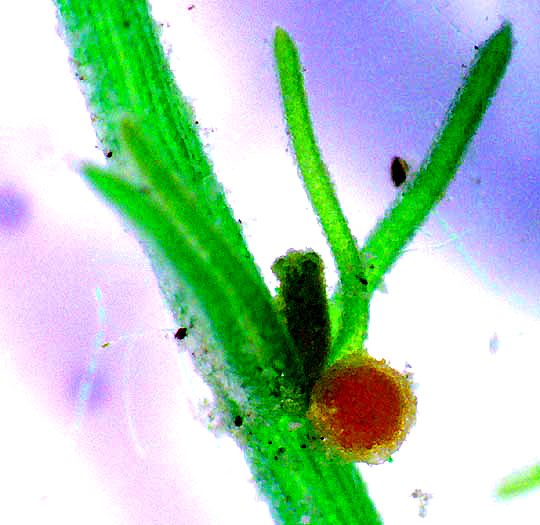Excerpts from Jim Conrad's
Naturalist Newsletter

from the March 16, 2014 Newsletter issued from the Frio Canyon Nature Education Center in the valley of the Dry Frio River in northern Uvalde County, southwestern Texas, on the southern border of the Edwards Plateau; elevation ~1750m (~5750 ft); N29.62°, W99.86°; USA
CHARA ALGA #2
Last August we looked at an alga in the Dry Frio River that normally is encased within a brittle mantle of calcium and magnesium carbonates, making the organism stiff and brittle. It was Chara, genus Chara. Numerous Chara species exist, and they're hard to identify to species level. Last August's Chara can be reviewed at https://www.backyardnature.net/n/x/chara.htm.
The other day a similar but much more slender and delicate looking alga turned up, also in a quiet pool at the Dry Frio's edge, shown at the top of this page. You can get a feeling for how large the organism is compared to my hand in the picture below:

Back at Juniper House the dissecting scope revealed the pretty picture shown below:

Those are typical male and female reproductive structures for Chara species. The spherical, reddish item is an antheridium producing sperm, while the darker, oblong item above it is the oogonium containing an egg. The oogonium when mature will be a little larger than the antheridium. Note that at the oogonium's top there's a crown of several cells, which is typical of Chara oogonia.
This Chara species was neither very brittle nor much encrusted with calcium and magnesium carbonates, though in the above picture a few transparent mineral crystals can be made out on the alga's surface.
Chara species provide homes for many micro and macro invertebrates, which in turn are eaten by fish and other wildlife such as amphibians, reptiles, and ducks. When Chara dies, its decomposition by bacteria and fungi provides food called "detritus" for many aquatic invertebrates.